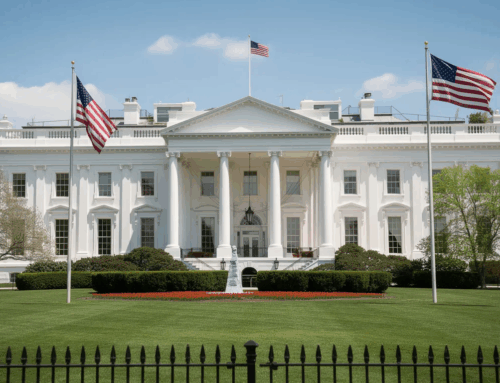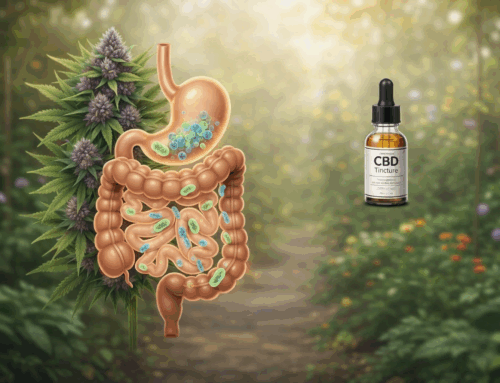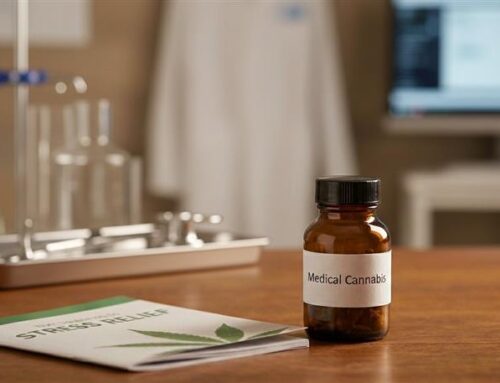Medicines are often used to treat conditions like muscle spasms, PTSD, chronic illness, sleeping disorders, and other issues like these. Medical marijuana and prescription medicines are the two types of medicines available, but they differ in important ways. Medical Marijuana vs Prescription Drugs: Which is best for you? This article will discuss medical marijuana and prescription drugs. We will examine their benefits, side effects, the law, etc. Most importantly, you’ll learn which is right for your condition or symptoms.
Understanding Medical Marijuana vs Prescription Drugs
From treating anxiety to dealing with pain, medicine can treat lots of health problems. Using medical marijuana or prescription drugs is very common among those looking for relief. Prescription drugs are more renowned among people, though the use of medical marijuana is picking up in recent times. Are they equally effective, or does one have an advantage over the other?
A doctor uses prescription drugs to fulfil a specific ailment in a patient. Like all other medicines, prescription drugs are tried and tested thoroughly. Medical marijuana comes from the cannabis plant and has been used for centuries. Only recent studies suggested medical marijuana for treatment.
Both prescription drugs and medical marijuana are useful in their ways. Some people prefer medical marijuana due to its organic nature, while others readily back prescription drugs due to it being sanctioned by the health regulators.
Understanding Medical Marijuana
What is Medical Marijuana?
Medical marijuana refers to cannabis used to treat specific health issues. Its source is the marijuana plant, from which oils from the flower are extracted for medical purposes instead of recreational ones. Its use is multi-faceted and varies with people, but it is commonly used as a natural remedy for pain relief, stress, and other ailments. Medical marijuana can be smoked or consumed orally and is often used for chronic pain, battling anxiety, and chronic nausea after getting a medical marijuana card from state regulatory.
Medical marijuana can only be given legally by a qualified healthcare professional, which differentiates it from recreational marijuana, which can be used freely. Traditional medicines, aka prescription drugs, can be purchased easily through a pharmacy. No medical card is required.
Benefits of Medical Marijuana
Where prescription drugs failed to help with chronic pain, cancer, and many surgical procedures having serious outcomes, medical marijuana can prove to be helpful. One of the foremost medical innovations recently is that medical marijuana can reduce pain, especially when used in conjunction with other pain medications like morphine and fentanyl. It can also relieve pain caused by arthritis, backache, and even cancer for those undergoing chemotherapy.
In this way, medical marijuana can aid with pain management while potentially reducing the side effects commonly associated with other medications.
Medical marijuana has been shown to improve mental health conditions like anxiety or depression. It appears that stressed individuals use marijuana as a means to elevate their mood. Those on medical chemotherapy have also benefitted from medical marijuana in reducing their nausea symptoms.
Prescribed Drugs Summary
What Are Prescribed Medicines?
A prescription drug is a medicine that can only be dispensed against a medical prescription. Buying non-prescription drugs does not require restriction. This regulation exists because prescription drugs can be easily misused or abused. Different countries have different rules on what non-prescription medicines are.
Prescription medicines, caregiven upon request from authorized medical personnel, go under stricter consideration than non prescription, which can be bought freely. This means a doctor has determined the medication best suitable for you and depends on your conditions.
Advantages and Disadvantages of Prescribed Medication
Prescription medication is essential for individuals dealing with chronic conditions like infections, pain, or mental health issues. Prescription medicines are dispensed by licensed healthcare professionals or pharmacies, which are regulated by health authorities like the FDA, ensuring safety and efficacy
But there are expected consequences, like feeling nauseous, lightheaded, or having a headache. In some situations, an individual can become addicted to a certain prescription, such as an opioid, if it is not managed appropriately.
Comparison Between Medical Marijuana and Traditional Medicines
Degree of Helpfulness
Both prescription drugs and medical marijuana serve useful purposes. There is a range of people who have used prescription drugs and managed pain, but those medicines don’t work for everyone. For instance, a medication designed for pain relief might not be effective for someone with chronic pain.
The same goes for medical marijuana; some people believe that it may be beneficial for pain as well as anxiety. Others think it is more effective than traditional medications, while others feel that they are much safer.
Comparison of Side Effects
Like most medications, medical marijuana can have side effects, although these may vary from person to person. And some people are more than willing to tolerate the side effects because medical marijuana has been proven to have positive impacts on them.
The side effects of medical marijuana can include slightly feeling faint or fatigued. However, these seem worth it for many people because the benefits outweigh the disadvantages.
Legal and Regulatory Considerations
Legal Status of Medical Marijuana
One of the clearest differences between medical marijuana and prescription drugs is the law. Doctors can prescribe any prescription drugs according to your symptoms and needs without you having a medical card. However, for medical marijuana, you must have a medical marijuana card to use it. Even if it is legal in your state, you cannot use medical marijuana without an MMJ card. Additionally, marijuana remains illegal in some areas, making access more difficult for some patients.
Prescription drugs, on the other hand, are legal everywhere as long as a doctor has prescribed them. It is vital to understand the rules in your region before considering the usage of medical marijuana.
Navigating Prescription Drug Regulations
Health authorities have specific interdiction for prescription drugs because of the sensitive nature of the drugs. Prescribers and pharmacists must observe these rules when issuing and dispensing the medication. This prevents abuse and ensures the patient receives the appropriate care.
Patient Experiences and Testimonials
Success Stories with Medical Marijuana
Most patients who have legally used medical marijuana report positive outcomes. Some say it helps reduce their pain, and others report relief from anxiety leading to better sleep. It works towards improving the overall quality of life.
Obstacles Encountered by Users of Prescription Drugs
Patients using prescription drugs sometimes have side effects or dependency issues. While pain relief medications can be highly effective, they also carry the risk of addiction, especially if not properly managed. For instance, these patients might feel disoriented or fatigued. This side effect can result in non-adherence to medication.
Making a Choice
Choosing between medical marijuana and prescription drugs requires careful consideration. It’s essential to consult with a healthcare provider to determine the best option for your condition. If a patient is experiencing chronic pain, they might want to use medical marijuana seasonally. However, if they require more severe treatment, they might have to take prescription medications.
Conclusion
Just like prescription medications, medical marijuana has its benefits and downsides. We have seen that pain and anxiety can be alleviated with the use of medical marijuana. Prescription drugs are also tested and readily available in dispensaries. However, they are not perfect either. The best option for you will depend on your specific conditions and symptoms, and it’s crucial to seek professional medical advice before making any decisions. Always consider the pros and cons of each option. Your physician’s input is crucial before making decisions regarding your health.
FAQs
What is Medical Cannabis for Pneumonia and how does it help?
Medical cannabis can provide relief for pneumonia patients by helping with symptoms such as coughing, inflammation, and pain. Certain cannabinoids have anti-inflammatory properties that may ease the discomfort caused by the infection and support the healing process. However, it's important to consult a healthcare provider before using it as a treatment.
How can I get the cheapest medical marijuana card?
To get the most cheapest medical marijuana card, it's recommended to compare prices from various certified providers or clinics. Some states offer discounts or sliding-scale fees based on income. Ensure you choose a licensed professional to avoid additional costs or legal issues when applying for your card.
Can Medical Cannabis help with Mental Health Patients?
Yes, medical cannabis has been shown to offer benefits for mental health patients, particularly those dealing with anxiety, depression, or PTSD. Cannabinoids like THC and CBD may help reduce symptoms by promoting relaxation and mood stabilization. However, it is essential for patients to discuss this option with their healthcare provider.
What’s the difference between Medical vs OTC Products?
Medical cannabis is prescribed by a healthcare professional for specific conditions, while over-the-counter (OTC) products can be purchased without a prescription. Medical cannabis often targets more severe conditions and may offer stronger relief, while OTC products like painkillers or supplements are typically used for milder symptoms.
Is Hemp Legal in Kentucky, and can it be used for medical purposes?
Yes, hemp is legal in Kentucky, and it can be used for a variety of purposes, including medical cannabis products containing CBD. However, it’s important to note that while hemp-derived CBD products are legal, medical marijuana (which contains higher levels of THC) is regulated and requires a medical marijuana card in states where it's legal.





